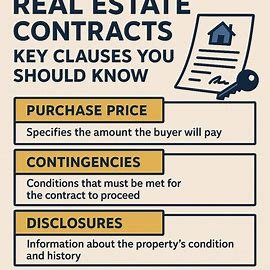Recent Posts
From Renting to Owning: A Buyer’s Roadmap
Introduction For many people, homeownership represents not only financial stability but also personal freedom. Moving from renting to owning is a major milestone—one that requires…
Real Estate Contracts: Key Clauses You Should Know
Introduction Real estate transactions are among the most significant financial commitments most people make in their lifetime. Whether you’re buying your first home, selling an…
The Rise of Green and Sustainable Real Estate
Introduction The real estate industry is undergoing a dramatic transformation, fueled by growing awareness of environmental concerns and the need for sustainable living. As climate…
Top Renovations That Add Value to Your Home
Introduction A home is more than just a living space—it’s also one of the most significant financial investments you’ll ever make. Over time, making the…
How to Choose the Right Real Estate Agent
Introduction Buying or selling a home is one of the most significant financial decisions you’ll make in your lifetime. While technology has made it easier…
Why Real Estate Remains a Safe Long-Term Investment
Introduction For generations, real estate investment has been a cornerstone of wealth building. Unlike stocks, which can be volatile, or bonds, which may offer limited…
The Beginner’s Guide to Real Estate Wholesaling
Introduction Real estate wholesaling has become one of the most accessible ways for beginners to enter the property market without large amounts of capital or…
Common Myths About Real Estate Debunked
Introduction Real estate is one of the most widely discussed and debated topics in finance, investment, and personal wealth planning. However, misconceptions abound, often leading…
How to Build Wealth Through Rental Properties
Introduction Investing in rental properties is one of the most effective ways to generate passive income and achieve long-term financial security. Unlike other investment options,…
The Role of Location in Real Estate Value
Introduction In real estate, the age-old adage “location, location, location” holds true. Location is arguably the most critical factor determining property value, influencing everything from…









